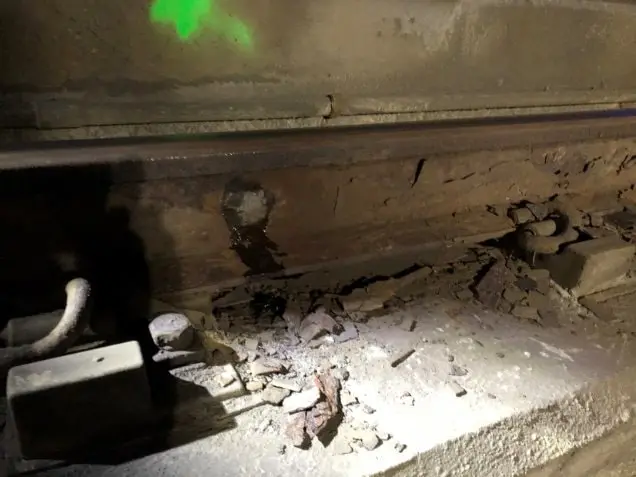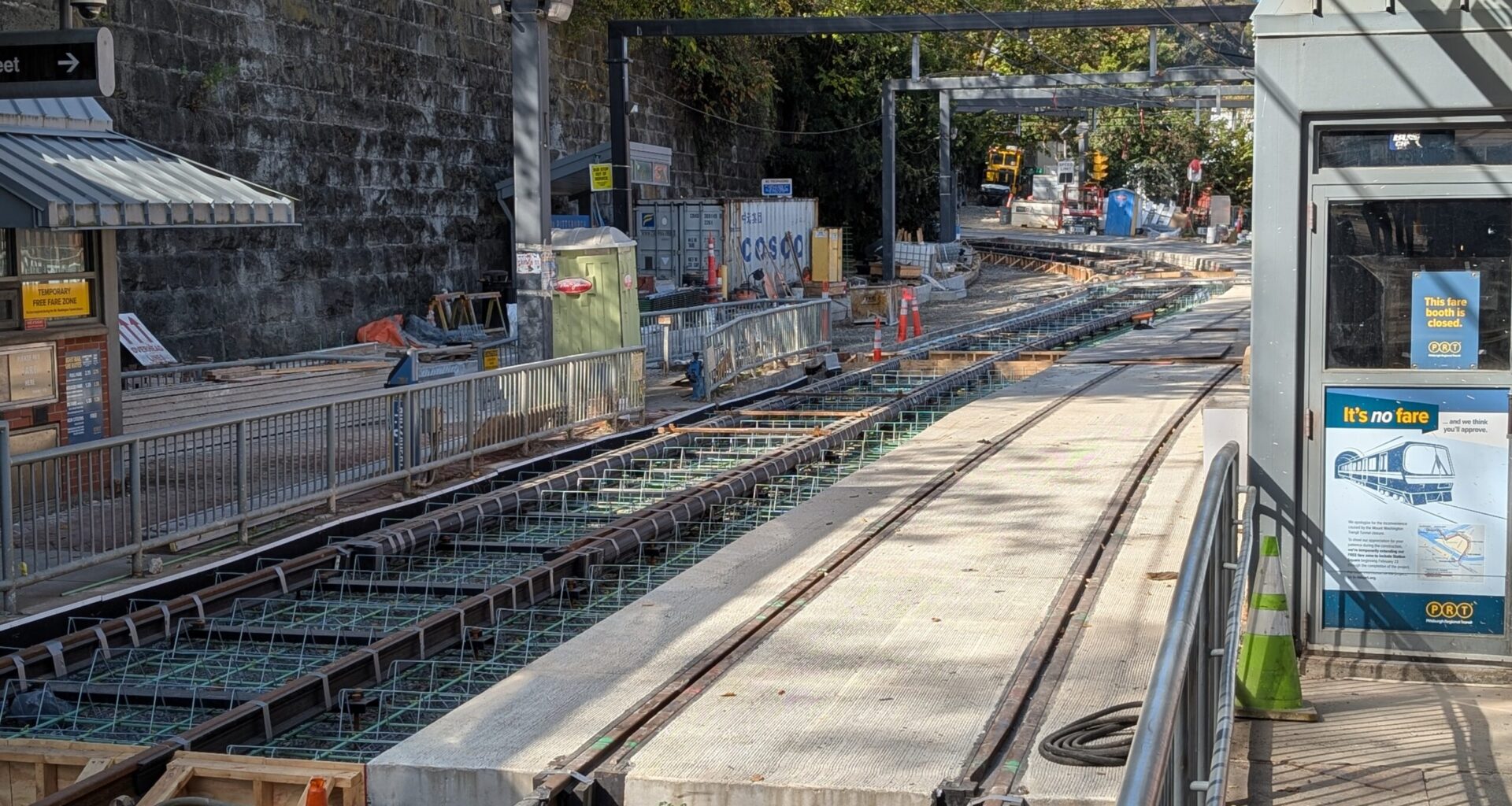These are the tales of three tunnels owned by Pittsburgh Regional Transit, one where reopening is being held up by mistake, another that is being readied for a $16.1 million upgrade, and a third that will be closed to avoid $38 million in needed improvements.
Here are the details:
Mount Washington Transit Tunnel
The tunnel that connects Station Square on Pittsburgh’s South Side with South Hills Junction closed in February for a $26 million makeover that PRT officials hoped would be finished by the end of the month, just after the three-times-a-year service changes that began Sunday.
But Chief Development Officer Amy Silbermann told the Planning & Stakeholder Relations Committee last week that it will be at least a few more weeks before that tunnel reopens. That’s because a section of curved rail entering the South Hills Junction end of the tunnel was installed too close to a bridge abutment and would have caused light rail trains to hit the abutment.
As a result, Silbermann said, the track has to be “repositioned” so trains cross the bridge safely. That work is expected to take a few extra weeks.
Silbermann said PRT and general contractor Mascaro Construction Co. are talking to determine whether there will be any additional cost for the extra work and who should pay for it.
“We are hoping it will be only a few more weeks [until the tunnel reopens],” she said.
The 3,500-foot tunnel is the only one in the country shared by buses and light rail vehicles, so the closure has created a number of transit changes for commuters.
For example, inbound buses and light rail vehicles have been rerouted through Allentown with trains using the dormant Blue Line. The trains go directly across the Panhandle Bridge and skip the stop at Station Square, forcing riders heading there to take a shuttle train from First Avenue while buses go down Arlington Avenue to East Carson Street and turn right onto the Smithfield Street Bridge to enter Downtown Pittsburgh.
Going outbound, trains follow the reverse route through Allentown, but bus routes cross the Smithfield Street Bridge, turn right and use the Wabash Tunnel to get to the South Hills.
The changes add seven or eight minutes to the normal light rail trip.
Mt. Lebanon Tunnel
The agency expects to begin a 34-month project next summer to replace tracks in the 3,000-foot tunnel and a grade crossing in Dormont. The good news is the work should cause minimal problems for commuters, according to Greg O’Hare, PRT’s chief engineer.
O’Hare told the board’s Performance Oversight Committee last week that the tracks inside the tunnel are expected to be replaced next summer, then there will be a pause until 2027 for additional tracks to be replaced outside the tunnel. That’s because tracks on both ends have special requirements for switches that take a long time to acquire.
Because there is limited traffic through the tunnel, O’Hare said, the agency can have trains alternate using one side of the tunnel in both directions while crews work on the other side.
In addition to the track work, the project involves improving the grade crossing at Raleigh Avenue in Dormont. The tunnel carries light rail vehicles between Dormont at Raleigh Avenue underneath McFarland and Washington roads to Shady Drive East in Mt. Lebanon.
The committee unanimously recommended the agency award a $16.1 million contract to RailWorks Track Services LLC for the work when it meets Friday.
 Pittsburgh Regional Transit is expected to issue a contract this week to improve track conditions like this inside the Mt. Lebanon Transit Tunnel. (Courtesy of Pittsburgh Regional Transit)
Pittsburgh Regional Transit is expected to issue a contract this week to improve track conditions like this inside the Mt. Lebanon Transit Tunnel. (Courtesy of Pittsburgh Regional Transit)
Wabash Tunnel
The agency expects to close the Wabash Tunnel between West Carson Street on Pittsburgh’s South Side and Woodruff Street in Mount Washington next May unless it can find someone else who wants to operate it.
The authority recently received a two-year reprieve from its financial crisis by using capital funds to pay for operating expenses while it waits for the state to increase its subsidy for transit. Regardless of whether the state comes through, Silbermann said last week, it just doesn’t make sense for PRT to spend the $38 million needed to replace lights and do other work in the tunnel.
Right now, the agency has closed the 3,340-foot tunnel to regular traffic and is using it for outbound buses while the Mount Washington Transit Tunnel is closed, but that should end in the next few weeks. Ordinarily, the one-way tunnel switches for inbound and outbound rush hours and gets minimal use most of the time.
For the next several months, Silbermann said, the agency will talk with other government agencies to see if they want to take it over the tunnel, and if not it will close in May.
The tunnel was originally built by the Wabash Pittsburgh Terminal Railway in the early 1900s but closed shortly after due to financial problems. It had a checkered history after that with other rail lines using it at times through the 1940s until it closed for several decades. Port Authority Transit acquired it as part of the ill-fated Skybus project in the early 1970s that never moved forward.
The agency used it to store buses for a number of years, then it reopened as an HOV lane.
The HOV restrictions were lifted when West Carson Street was closed for construction in 2013, then removed permanently in 2017. When it isn’t closed for exclusive transit use, it averages about 2,000 vehicles a day for inbound traffic in the morning and outbound in the evening.
Ed covers transportation at the Pittsburgh Post-Gazette, but he’s currently on strike. Email him at eblazina@unionprogress.com.



